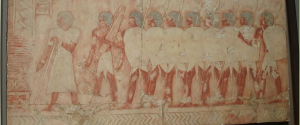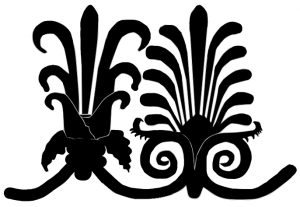(Before 1913)

One of the two Palmer casts [see also 10] is this cast from a relief in the mortuary temple or temple tomb of Hatshepsut, the first female pharaoh of Egypt, in Deir el Bahari, Egypt (ca. 1500 BC). The image shows an Egyptian commander presenting offerings to the Prince of Ethiopia on the shores of the Red Sea. The soldiers are waiting to carry out a trade deal with the Ethiopian people. Their journey to the country from Egypt is shown on the panel to the right. Trade was (and remains) important because it allowed cultures to combine and resources to be shared. Egypt’s relationship with Ethiopia, for example, brought them gold, incense, and ivory, all valuable resources. This wealth of natural resources led the Egyptians to call Ethiopia ‘god’s land’.
 Click here for the next stop on our trail.
Click here for the next stop on our trail.
This post is part of Beyond the Ure, a sculpture trail around the Edith Morley Building at the University of Reading.

